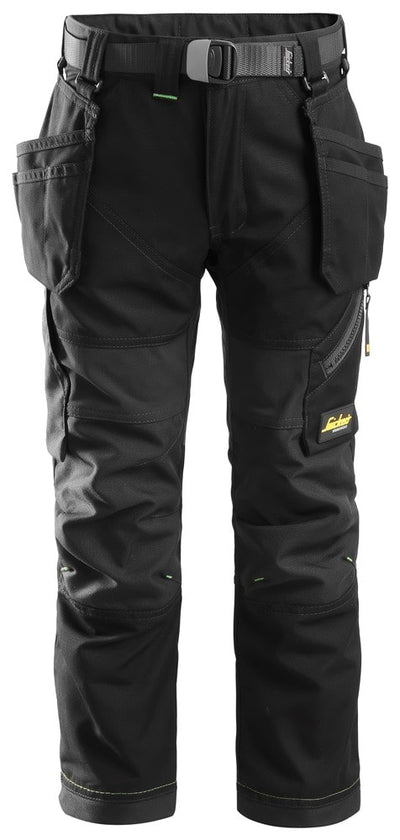The Ultimate Hi Vis Workwear Checklist
High-visibility (hi vis) workwear is essential for ensuring safety in various industries. Whether you work in construction, transportation, or emergency services, wearing hi vis gear can reduce the risk of accidents. This guide will cover everything you need to know about choosing, maintaining, and using hi vis workwear to ensure maximum protection.
Importance of Hi Vis Workwear
Hi vis workwear enhances visibility, making workers easily identifiable in low-light or high-risk environments. The use of reflective materials and bright colours ensures that individuals can be seen from a distance, reducing workplace accidents and fatalities.
Who Needs Hi Vis Workwear?
Hi vis clothing is commonly worn by:
-
Construction workers
-
Roadside workers
-
Warehouse employees
-
Emergency responders
-
Railway staff
-
Airport personnel
Key Safety Standards for Hi Vis Workwear
UK and EU Regulations
In the UK and EU, hi vis workwear must comply with EN ISO 20471, which outlines visibility requirements for different risk levels. Employers are required to provide appropriate PPE (Personal Protective Equipment) under the Health and Safety at Work Act 1974.
Common Compliance Certifications
Hi vis garments should meet the following standards:
-
EN ISO 20471 – European standard for high visibility clothing
-
RIS-3279-TOM – Rail industry standard for hi vis orange clothing
-
GO/RT 3279 – Old railway industry standard (replaced by RIS-3279-TOM)
-
EN 343 – Waterproof hi vis workwear certification
Types of Hi Vis Workwear
Hi Vis Jackets
Hi vis jackets provide full upper-body visibility and protection. They are available in waterproof, thermal, and breathable designs, depending on the work environment.
Hi Vis Trousers
These ensure lower-body visibility, often featuring reflective tape around the legs. Some designs include thermal or waterproof options for added protection.
Hi Vis Coveralls
Full-body coveralls offer complete protection, making them ideal for hazardous environments like chemical plants or cold storage facilities.
Hi Vis Vests
A staple for many industries, hi vis vests are lightweight and easy to wear over regular clothing. They are available in different visibility classifications.
Hi Vis Accessories (Gloves, Hats, etc.)
Additional hi vis accessories include:
-
Gloves with reflective strips
-
Hi vis beanies and caps
-
Hi vis safety boots
Choosing the Right Hi Vis Workwear
Material and Durability
Select garments made from durable polyester, cotton, or polycotton blends to withstand harsh conditions.
Weather Considerations (Cold, Rain, Heat)
-
For cold environments, opt for insulated hi vis jackets.
-
In rainy conditions, waterproof hi vis gear with EN 343 certification is recommended.
-
For hot climates, breathable and lightweight fabrics are ideal.
Fit and Comfort
Proper fit ensures safety and mobility. Too tight, and it restricts movement; too loose, and it becomes a hazard.
Customisation and Branding
Many businesses customise hi vis workwear with company logos or employee names while ensuring compliance with safety standards.
Maintenance and Care for Hi Vis Workwear
Washing and Cleaning Guidelines
-
Use mild detergents to avoid damaging reflective tape.
-
Wash at recommended temperatures (check manufacturer’s label).
-
Avoid fabric softeners, which can degrade reflectivity.
Storage and Longevity Tips
-
Store in a dry, cool place.
-
Keep away from direct sunlight when not in use.
-
Regularly inspect for wear and tear.
When to Replace Your Hi Vis Gear
Replace hi vis clothing if:
-
The reflective tape is peeling or faded.
-
Fabric becomes damaged or stained beyond cleaning.
-
It no longer meets required safety standards.
Common Mistakes When Choosing Hi Vis Workwear
Overlooking Compliance Standards
Ensure all hi vis clothing meets EN ISO 20471 or other relevant standards for workplace safety.
Choosing the Wrong Size
Incorrect sizing can hinder movement and reduce effectiveness, leading to discomfort and safety hazards.
Ignoring Weather Conditions
Selecting inappropriate materials can cause discomfort and inefficiency. Always choose the right hi vis clothing for the environment.
FAQs About Hi Vis Workwear
1. How often should hi vis clothing be replaced?
Hi vis clothing should be replaced every 6-12 months or as soon as it shows significant wear, fading, or damage.
2. Can hi vis workwear be washed in a washing machine?
Yes, but always follow the care instructions. Use mild detergent, avoid fabric softeners, and wash at low temperatures.
3. Do hi vis vests meet the same safety standards as jackets?
Hi vis vests can meet EN ISO 20471 standards but provide less coverage than jackets. Always check the class rating.
4. Is orange hi vis better than yellow?
Both colours provide high visibility, but orange is mandatory for railway workers under RIS-3279-TOM standards.
5. Can I wear hi vis clothing over my normal clothes?
Yes, hi vis vests and jackets are designed to be worn over regular clothing for easy visibility and compliance.
6. Are there specific hi vis standards for night time work?
Yes, Class 3 hi vis clothing is required for high-risk, low-light environments, providing the most visibility.
Conclusion
Hi vis workwear is a crucial part of workplace safety, ensuring that workers are visible and protected. Choosing the right gear, maintaining it properly, and complying with regulations will help reduce risks and enhance safety in any high-risk environment.
Our Hi Vis Top Picks
6243 Snickers High-Vis Class 2 Stretch Trousers with Holster Pockets Orange/Black

1138 Snickers AllroundWork, High-Vis Insulated Jacket Yellow/Steel Grey

Portwest T400 PW3 Hi-Vis Winter Jacket Yellow/Black
Shop our full range of Hi Vis Products here.



